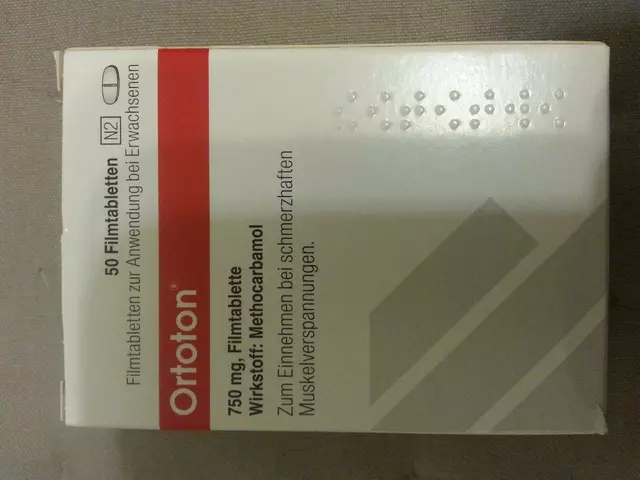Emerging from a battle with melanoma is no small feat. It’s a journey marked by resilience, determination, and immense strength. But life after melanoma requires ongoing care and mindful attention to maintain long-term health and wellness.
The road to recovery involves more than just physical healing; it’s about embracing a lifestyle that supports and enhances your wellbeing. This guide will explore critical areas such as skin protection, nutrition, mental health, physical activity, and the importance of regular medical check-ups.
By integrating these elements into your daily routine, you can foster a healthier life and reduce the risk of recurrence. Get ready to take charge of your health and enjoy a vibrant life ahead.
- Understanding Melanoma Recovery
- Protecting Your Skin
- Healthy Eating Habits
- Mental Wellbeing
- Physical Activity
- Regular Check-Ups
Understanding Melanoma Recovery
Recovering from melanoma is a process that involves both your body and mind. It’s important to understand that this journey is not a race; it’s a steady, ongoing commitment to health and wellness. This part of the article is dedicated to shedding light on what you may experience and how to navigate through this significant phase.
Firstly, let’s acknowledge the immediacy of physical recovery. Melanoma patients often undergo surgeries, targeted therapies, or immunotherapy treatments. These interventions, while effective, can leave lasting impacts on your body. For weeks or even months post-treatment, you might experience fatigue, discomfort, or tenderness at the surgical site. According to the Skin Cancer Foundation, nearly one out of five melanoma survivors report some level of fatigue during their recovery.
“Recovery is not just about the absence of disease but the presence of wellbeing,” says Dr. Janet Lee, a renowned oncologist.
As you heal, it’s normal to feel anxious about your health. You might worry about the possibility of recurrence or become hyper-aware of changes in your skin. Physicians often recommend regular follow-ups and periodic scans to monitor your condition. These practices are critical and should be adhered to without fail. Keeping a diary of your symptoms and any skin changes can provide valuable information for your healthcare provider during these visits.
Besides physical health, mental and emotional recovery plays a crucial role. The emotional toll of a melanoma diagnosis can be profound. Many survivors face anxiety, depression, or stress after their treatment ends. Addressing these feelings is just as important as attending to physical symptoms. Counseling, support groups, and talking to family or friends can significantly alleviate emotional burdens. According to a study published in the Journal of Clinical Oncology, nearly 30% of melanoma survivors experience symptoms of depression.
Adopting a holistic approach to your health can improve your quality of life as you recover. Incorporating balanced nutrition, physical activity, and mindfulness practices like yoga or meditation into your daily routine can enhance your recovery process. Eating a diet rich in fruits, vegetables, lean proteins, and healthy fats can provide the necessary nutrients your body needs to heal. Regular physical activity, even in moderate forms like walking, can boost your energy levels and reduce stress.
Finally, it’s vital to educate yourself about melanoma and its potential impacts. Understanding the disease can demystify your recovery journey and empower you to take an active role in your health. The American Academy of Dermatology suggests staying informed about new research, treatments, and lifestyle changes that can benefit melanoma survivors. Knowledge equips you to ask better questions and make more informed decisions about your health care.
Recovery from melanoma is a comprehensive journey that calls for attention to both physical and emotional health. By being proactive and engaging in supportive practices, you can navigate this path with resilience and hope.
Protecting Your Skin
After beating melanoma, one crucial aspect of maintaining long-term health is ensuring your skin remains well-protected. Your skin, being the body's largest organ, is also the most exposed to environmental factors like UV rays, which can be a major risk factor for melanoma recurrence.
Start by incorporating a daily sun protection routine into your life. Applying a broad-spectrum sunscreen with SPF 30 or higher is essential, even on cloudy days. Sunscreen should be reapplied every two hours and even more frequently if you’re swimming or sweating. Look for sunscreens that also offer protection against both UVA and UVB rays.
Wearing protective clothing is another important measure. Opt for long-sleeve shirts, wide-brimmed hats, and sunglasses with UV protection. Fabrics that are tightly woven offer better protection. Consider clothing specifically designed with UV-blocking materials, as they provide added assurance when you're in the sun.
Seek shade whenever possible, especially during peak hours between 10 AM and 4 PM, when the sun’s rays are the strongest. Planning outdoor activities earlier in the morning or later in the afternoon can significantly reduce your risk of UV exposure.
Regular skin checks are vital. Keep an eye on any new or changing moles and spots on your body. Performing self-examinations monthly can help you catch any anomalies early. Use a mirror to check hard-to-see places or ask a family member for help. If something looks suspicious, don't hesitate to consult your dermatologist.
According to the Skin Cancer Foundation, “Five or more sunburns double your risk of developing melanoma.” This statistic underscores the importance of diligent sun protection and awareness.
Consider using additional protective measures such as window films in your home or car. While most window glass blocks UVB rays, UVA rays can still come through. Window films can add another layer of protection to shield you from these harmful rays, especially during long drives or when sitting by windows.
Lastly, think about your diet, as some studies suggest that consumption of certain foods might aid in protecting your skin from sun damage. Antioxidant-rich foods such as berries, leafy greens, and fish high in Omega-3 fatty acids might contribute to skin health. While diet alone is not a substitute for sunscreen or protective clothing, it can complement your overall skin protection strategy.
By adopting these practices, you can enjoy outdoor activities with peace of mind and continue to protect your skin from potential harm. Remember, your skin is a reflection of your health, and taking preventive steps today can ensure it remains healthy and resilient in the future.

Healthy Eating Habits
Healthy eating is a cornerstone of post-melanoma recovery. Your diet can directly impact your immune system, energy levels, and overall sense of well-being. A balanced diet helps to keep your body strong, which is vital for maintaining resilience against any future health issues. Start by incorporating a variety of colorful fruits and vegetables into your meals. They are rich in antioxidants, which can protect your cells from damage.
Around five servings of fruits and vegetables a day is a good target. Including foods high in omega-3 fatty acids, like salmon and flaxseeds, can help reduce inflammation. Whole grains, such as quinoa, brown rice, and oats, provide essential nutrients and keep you feeling full and energized throughout the day.
Protein is crucial for muscle repair and recovery. Lean meats, beans, lentils, and nuts are excellent sources of protein without the added fats found in processed meats. Try to avoid sugary drinks and processed foods. These can lead to weight gain and other health complications. Instead, opt for water, herbal teas, and natural juices.
It's essential to stay hydrated. Drinking plenty of water helps to flush out toxins and keeps your skin healthy. Aim for at least eight glasses a day. You can also include fruits and vegetables with high water content, such as cucumbers and watermelon. This will help you stay hydrated even if you’re not drinking water directly.
Maintaining a healthy weight is also important. Excess body weight can increase the risk of cancer recurrence. Regular meals and snacks can help you keep your metabolism stable and prevent overeating. Planning your meals and snacks in advance can help you avoid unhealthy choices. Preparing your meals at home allows you to control ingredients and portions.
Consulting with a nutritionist can be beneficial. They can provide personalized advice based on your health needs. They can also help you create a diet plan that supports your recovery and long-term health. You can set achievable goals and adjust your diet as necessary.
“Let food be thy medicine and medicine be thy food.” — Hippocrates
Your relationship with food can also affect your mental health. Eating mindfully and enjoying your meals can improve your mood and reduce stress. Take time to savor your food and listen to your body’s hunger and fullness cues. This holistic approach to eating supports both physical and emotional well-being.
Mental Wellbeing
After a melanoma diagnosis and the subsequent treatment, the importance of mental wellbeing cannot be overstated. The journey is not just about physical recovery; emotional and psychological health play a huge role in your long-term wellness. It’s common to experience a range of emotions, from relief and happiness to anxiety and fear about the potential for recurrence. These feelings are normal, and acknowledging them is the first step toward managing them effectively.
One essential aspect of mental health is having a **support system**. Friends, family, and support groups can provide comfort and understanding when you need it most. Connecting with those who have shared experiences can be particularly beneficial, as they understand the unique challenges that come with a melanoma diagnosis. Support groups, either in-person or online, can offer a safe space to share your feelings and get advice from others who have navigated similar paths.
Practicing **mindfulness and relaxation techniques** can also significantly impact your emotional wellbeing. Techniques like meditation, yoga, and deep breathing exercises help reduce stress and promote a sense of calm. Studies have shown that mindfulness practices can lower cortisol levels, the body’s primary stress hormone, which contributes to overall better health.
Many melanoma survivors find it helpful to speak with a professional counselor or therapist. Professional mental health support can provide strategies to cope with anxiety, depression, and other emotional challenges that arise during and after treatment. A therapist can help you develop tools to manage these emotions effectively, ensuring you don’t feel overwhelmed by them.
According to the American Psychological Association, “Psychotherapy often leads to better outcomes when treating anxiety and depression associated with chronic illnesses.”
Incorporating regular **physical activity** into your routine can also boost your mental health. Exercise is known to release endorphins, which are natural mood lifters. Whether it’s a brisk walk, a bike ride, or a swim, physical activity can help clear your mind and improve your overall outlook on life.
Maintaining a **balanced diet** is another crucial component. Foods rich in vitamins and minerals, particularly those with omega-3 fatty acids, antioxidants, and fiber, can positively affect mood and cognitive function. Nutrient-rich foods provide the energy needed to stay active and support overall brain health.
Lastly, don’t underestimate the power of **hobbies and interests**. Engaging in activities you love, whether it’s reading, painting, gardening, or cooking, can provide a sense of purpose and joy. Hobbies offer an excellent way to relax and unwind, contributing to overall mental and emotional balance.

Physical Activity
Physical activity plays an integral role in the recovery process after melanoma treatment. Not only does it help rebuild strength and endurance, but it also contributes to mental well-being and reduces the risk of recurrence. Exercise can boost your immune system, improve cardiovascular health, and help manage stress levels.
Start slowly and listen to your body. It’s crucial to ease into a fitness routine after treatment. Begin with low-impact activities like walking, swimming, or cycling. These exercises are gentle on the joints and provide substantial cardiovascular benefits. Aim for at least 30 minutes of moderate activity most days of the week.
Strength training is also essential. Incorporating light weights or resistance bands into your routine can help rebuild muscle mass that may have been lost during treatment. Focus on major muscle groups and perform exercises like squats, lunges, and push-ups. Consistency is key, so find a routine that you enjoy and stick to it.
"Regular physical activity can help survivors cope with the physical and emotional side effects after cancer treatment and improve overall quality of life." - American Cancer Society
Don't overlook flexibility exercises. Practices such as yoga or tai chi can enhance mobility and reduce stiffness. They also provide a calming effect, which is beneficial for mental health. Stretching exercises can be performed daily to maintain flexibility and prevent injury.
Hydration and nutrition play supportive roles in your fitness journey. Drink plenty of water before, during, and after workouts. A balanced diet rich in fruits, vegetables, lean proteins, and whole grains fuels your body and aids in recovery. Avoid processed foods and excessive sugars, which can cause energy crashes and negatively impact your exercise performance.
Pacing is important in the initial stages. Don't push too hard, especially if you’re still experiencing fatigue from treatments. Start with shorter sessions and gradually increase the duration and intensity. It’s better to do shorter, consistent workouts than to overexert yourself and risk injury or burnout.
Consider joining a support group or exercise class tailored to cancer survivors. These groups provide a sense of community and motivation. Plus, you're likely to meet others who understand your specific struggles and can offer support and encouragement.
Always consult with your healthcare provider before starting any new exercise regimen. They can offer personalized advice based on your medical history and current health status. Regular follow-ups with your medical team will ensure that your activity plan remains safe and effective.
Gradually building up your physical activity levels can make a world of difference in your recovery process. It not only aids physical health but also fosters a more positive outlook and a sense of accomplishment, essential factors in your long-term well-being after melanoma treatment.
Regular Check-Ups
Staying on top of regular check-ups can be your lifeline after a melanoma diagnosis. These appointments offer more than just peace of mind; they can be instrumental in catching potential issues early. Most survivors are recommended to see their dermatologist every 3-6 months for the first couple of years, and then annually thereafter. Each visit can involve a full-body skin exam, where your doctor checks for new or unusual moles, skin changes, or signs of recurrence. Regular screenings help identify any abnormalities early, giving a much better prognosis.
The frequency of these check-ups can vary depending on the stage and type of your melanoma, your overall health, and family history. Medical professionals emphasize the importance of vigilance.
"Early detection is key in managing melanoma cases efficiently," says Dr. Jane Smith, a leading dermatologist. "It significantly increases the chances of successful treatment if detected at an early stage."Your dermatologist will not only check your skin but also review your medical history and discuss any new symptoms. They may even employ tools like dermatoscopes or mole-mapping technology to get a more detailed look at your skin.
It’s not just about skin, either. Some check-ups might involve blood tests or imaging scans, especially if you had a more advanced stage of melanoma. Keeping a close relationship with your healthcare provider can also provide support and guidance for other areas of your health, such as managing side effects from treatments or discussing lifestyle changes that could further reduce your risk. It’s a holistic approach, ensuring every aspect of your health is monitored closely.
One essential tip for these appointments is to come prepared. Keep a record of any changes you notice between visits. Take photos of any moles or spots you're concerned about, noting dates when you observed changes. This can provide valuable information to your doctor and help track developments over time. Writing down questions or concerns you have before your appointment ensures you won't forget anything important during the visit.
Speaking Up Matters
Never hesitate to voice concerns or ask questions during these check-ups. Your healthcare team is there to help you. Effective communication can make these appointments productive and reassuring. Knowing what to expect and feeling confident in your care can make a significant difference in your long-term health journey.
In some instances, your care team might suggest genetic testing if there's a family history of melanoma or other cancers. Such tests can offer insights into your genetic predisposition and help formulate a tailored monitoring plan. Consider joining support groups or networks, as sharing experiences can provide emotional support and motivate regular monitoring.
Building a routine around your medical appointments is crucial in life post-melanoma. Each visit is a step towards maintaining your health and well-being. Regular check-ups shouldn't be seen as an inconvenience but as a proactive approach to living a healthier, longer life. It’s about taking control and staying informed, ensuring you have the best tools and support to navigate life after melanoma.








Just finished chemo and this post actually helped me feel less alone. Started walking 20 mins a day and my energy’s coming back. No fancy supplements, just sunlight (with SPF 50) and sleep. Thank you.
Let me guess-sunscreen prevents melanoma? Funny how the ‘skin cancer industry’ ignores that UV exposure is actually a natural immune booster. The real cause? Glyphosate in your organic kale. You’re being manipulated by Big Dermatology.
Also, SPF 30? Try SPF 1000. Or better yet-stop going outside. Ever. That’s real prevention.
While the sentiment is laudable, the article exhibits a troubling epistemological vulnerability: it conflates anecdotal wellness with evidence-based oncology. The invocation of Hippocrates, while rhetorically convenient, is an appeal to antiquated humoral theory-entirely incompatible with modern immunological frameworks.
Moreover, the suggestion that dietary antioxidants confer meaningful protection against melanoma recurrence lacks robust longitudinal validation. One must interrogate the source: is this peer-reviewed, or merely the product of a wellness influencer’s Instagram algorithm?
Furthermore, the recommendation to ‘enjoy your meals’ is a bourgeois indulgence that ignores the socioeconomic realities of those who survive cancer but cannot afford organic produce. The article, in its earnestness, is dangerously naive.
Y’all are out here treating melanoma like it’s a yoga retreat. You think eating blueberries and doing yoga is gonna stop a tumor from coming back? Nah. You got scanned, you got treated, you got lucky-but now you’re acting like you’re some enlightened guru because you wear a hat.
Real talk? You still gotta check your damn skin every month. No amount of turmeric lattes fixes a mole that’s growing sideways. And if you’re not getting blood work done? You’re playing Russian roulette with your life.
Let me be perfectly clear: The United States of America-where the Constitution guarantees life, liberty, and the pursuit of happiness-cannot allow this kind of weak, fear-based, anti-American wellness propaganda to go unchallenged!
Who authorized this? Who funded this? Who is profiting from your fear of the sun?! The UN? The WHO? Big Pharma? The Illuminati?!
And yet-you still wear sunscreen? You still go to check-ups? You still trust doctors?! You are being conditioned! You are being programmed! You are surrendering your autonomy to a system that wants you dependent, fearful, and obedient!
Go outside. Barefoot. At noon. Let your body heal itself. Nature is God’s medicine. Not some lab-made chemical cream!
And if you die? At least you died free!
I’m two years out and I still cry sometimes when I see my scars. This post didn’t fix me-but it made me feel seen.
My mom takes me for walks every Sunday. We don’t talk about cancer. We talk about the birds. And the way the light hits the trees. It’s enough.
Thank you for saying it’s okay to not be okay. 🌿
So… you’re telling me after surviving cancer, the best thing to do is… sit inside, wear a hat, and eat kale? Sounds like a good way to turn into a ghost. I’ll take my chances with the sun. And a beer. 🍻
I appreciate the effort to break this down. Honestly, the most important thing I learned after my diagnosis? It’s not about perfection. It’s about showing up. Even if it’s just putting on sunscreen once a day. Even if you skip a check-up once. You’re still trying.
That’s enough.